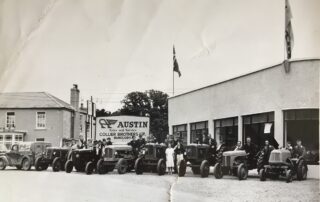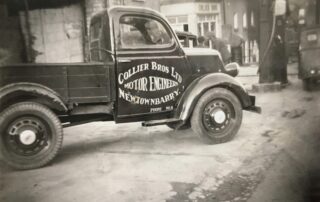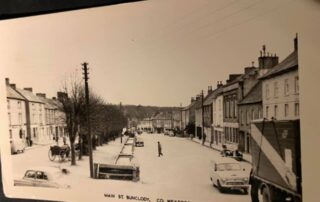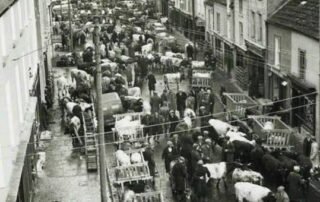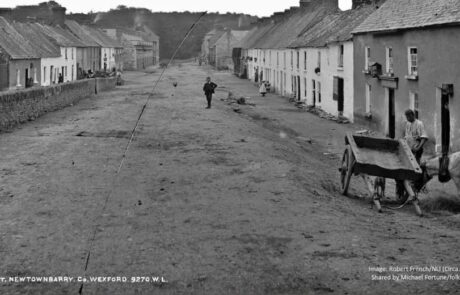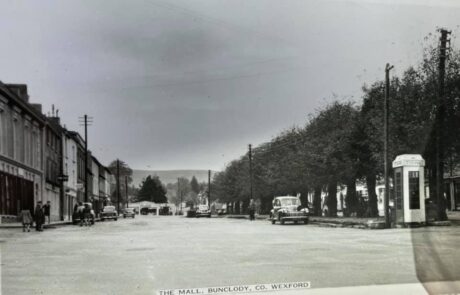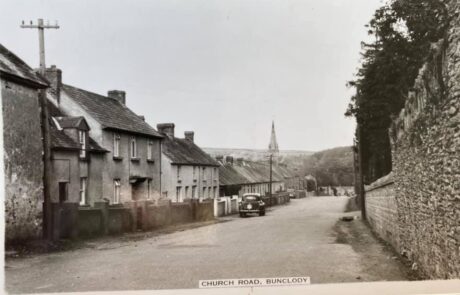A HISTORY OF BUNCLODY
Bun Clóidí means ‘the end of the Clóideach’, where the little river flows into the Slaney. It was only towards the end of the seventeenth century that the town came into existence, beginning as a small village. Up to then, the important centres would have been Clonmullen and Clohamon where the powerful Caomhánach (Kavanagh) family had their residences.
One of the most important figures in the late sixteenth and early seventeenth centuries was Dónall Spáinneach Caomhánach. He died in 1632 and was succeeded by his son, Sir Murchadh, colonel in the Confederate army,who was killed in the battle of Ballinvegga (near New Ross) on St Patrick’s Day 1643. The command of the regiment was taken over by his son, Dónall Óg. Another son, Cathaoir, lived at Carraig Dhubh (Carrigduff) and was a colonel in the Irish army fighting for James II against William of Orange. Cathaoir, with many others, was killed in an explosion on board an English warship on which they were being held prisoners in 1690. Sir Murchadh’s daughter was Eilíonóir to whom the north Wexford poet, Cearúll Óg Ó Dálaigh, wrote several love poems. She is remembered in tradition as Eilin A Run’.
After the Williamite war the surviving members of the Caomhánach family went to France. Their lands around Bun Clóidí were occupied by a Mark Owens from 1691 to 1718 and for about a year by a Feffrey Paul. In 1719 James Barry acquired the property. That same year his daughter, Judith, married John Maxwell who was created Baron Farnham in 1756. The Maxwell family remained in Bun Clóidí until 1854. The next owner was a Samuel Ashton who sold the estate to the Hall-Dare family in 1861.
Bun Clóidí figured in the insurrection of 1798. The insurgents, led by Fr Mogue Kearns, suffered a severe defeat on 1 June. Amongst those who took part in the battle was Miles Byrne, later to achieve fame in the army of France and author of two volumes of ‘Memoirs’.
On 18 June 1831 a serious disturbance took place at the Pound on Ryland Road when yeomen fired on a crowd protesting against the payment of Tithes. The event became known as ‘the battle of the pound’.
Up to 1776 Bun Clóidí was part of the huge parish of Templeshanbo. In that year St. Mary’s C.of I. church was built. The Methodist chapel was built in 1809. John Wesley visited Bun Clóidí in 1769 and in 1787.
Before the Church of St. Mary Magdalene was built in 1825/6, the only Catholic place of worship in the town of Bun Clóidí was a ‘Mass-house’, originally two barns, in Chapel Lane, whence the name.
In the aftermath of the Great Famine (1845-47), during the outbreak of cholera, the Fever Hospital on Hospital Hill could not cope with the numbers of victims and a temporary hospital was set up in the Mill Lane, at the top of the Mall.

